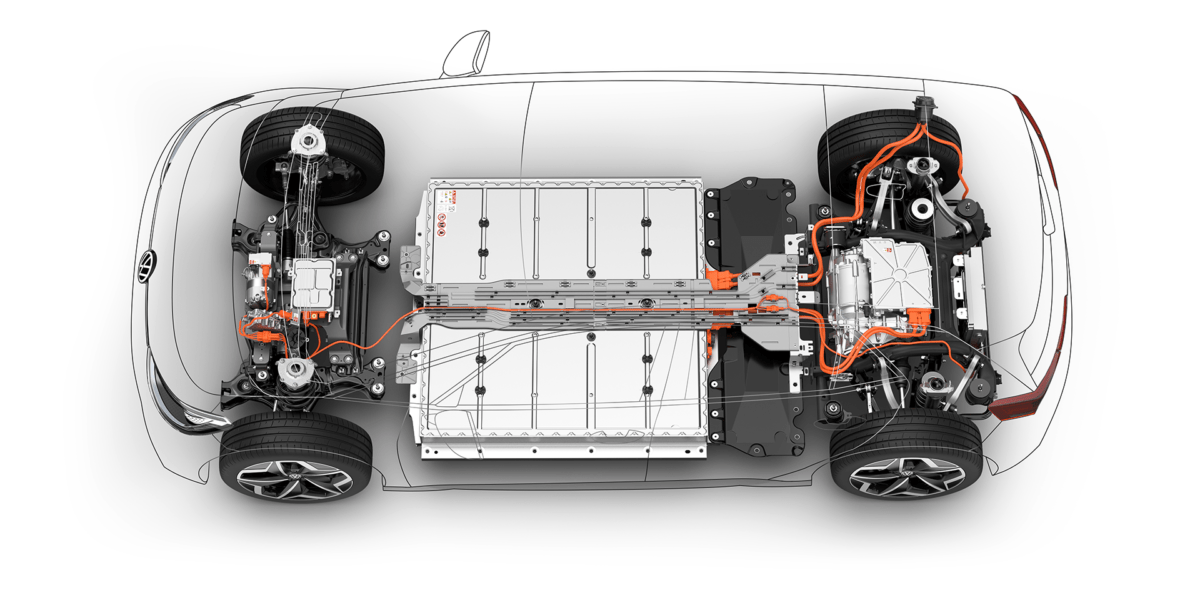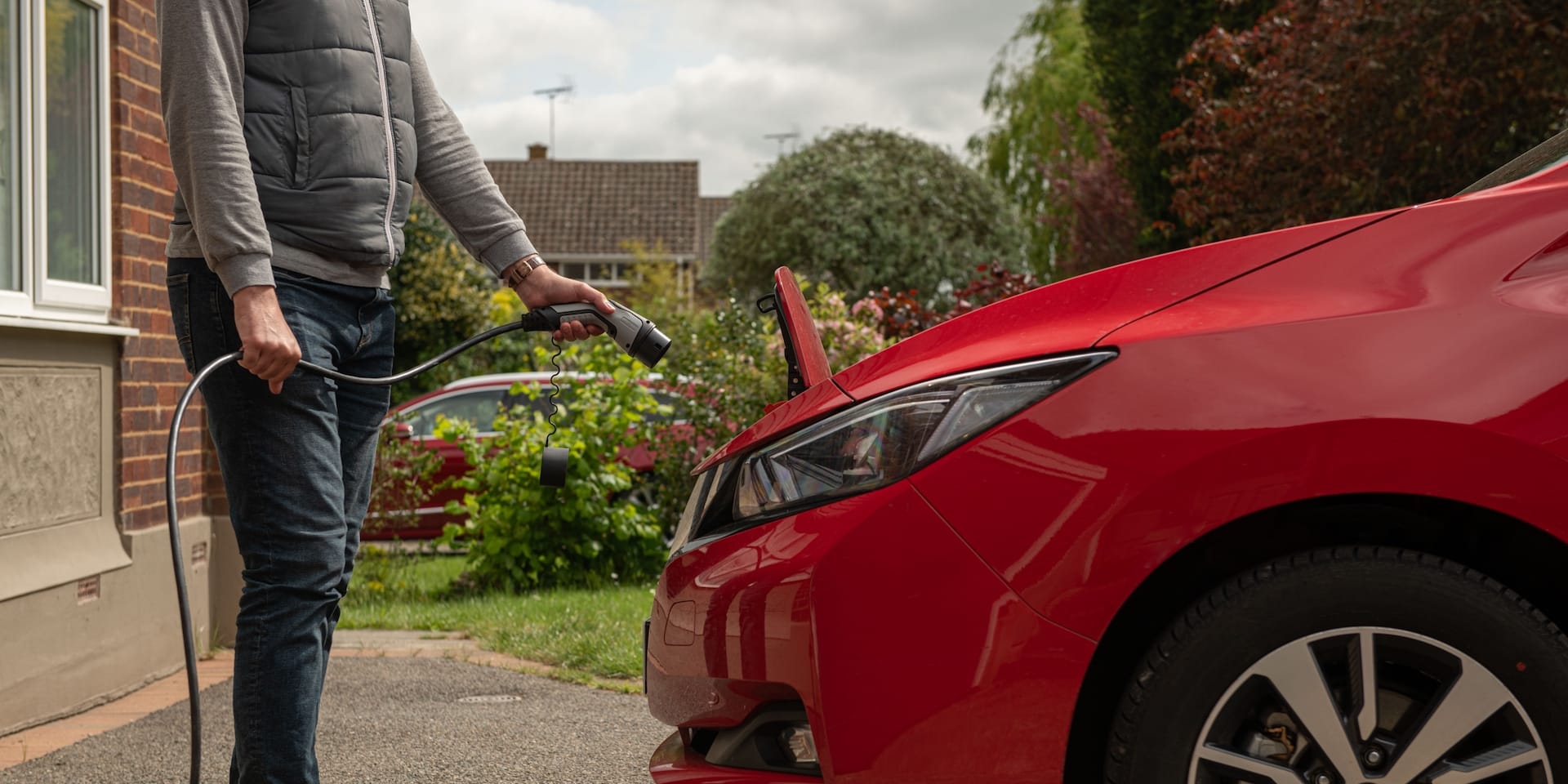When electric cars first started to appear on roads a decade ago, there was significant concern over battery life and degradation in capacity.
Thankfully, these concerns have largely been disproved as years of real-world experience have shown that electric vehicle (EV) batteries tend to last longer than the car itself, while battery capacity doesn’t degrade anywhere near as much as many people feared. We explain how it all works in this guide to EV batteries.
How does an EV battery work?
The battery of an EV is usually fitted under the floor of the car and looks like a big black slab. But this massive block contains a complex system to store and deliver electricity in the safest and most efficient manner possible – and for a long time.
The overall slab is not one big battery. It’s actually made up of several individual modules – effectively multiple batteries – with cables at either end that join the overall battery pack to the car’s electric motor, brakes, charger and control systems.
It will be cooled by either an air system (as used by the Nissan Leaf and Renault Zoe) or a piped liquid cooling system (such as EVs from Audi and Tesla). Electric motors have their own cooling system that is separate to the battery pack.
Modern EV batteries are most commonly made from Lithium-ion (Li-ion) and lithium polymer cells. The most frequent comparison is to a mobile phone battery as they use the same lithium-ion chemistry. However, this creates a lot of misunderstanding as the way a car battery works is quite different to a phone battery. The usual complaints of battery life dwindling after a couple of years don’t really apply like they do to your phone, which seems to magically lose most of its battery performance right about the time that a new phone model is launched…
Car batteries are comprised of thousands of individual Li-ion cells working together. When the car is charging, electricity is stored by making chemical changes inside the batteries. When you’re on the road, these changes are reversed to release this stored electricity from the batteries to power the motor. The car’s range is directly proportional to the battery pack’s capacity, size, volume and weight (and cost).

The above illustration shows the inner workings of the all-electric Volkswagen ID.3. The battery is stored underneath the the floor of the cabin, powering electric motors attached to the front and rear axles.
How long do electric car batteries last?
Batteries in modern EVs are engineered to last at least the life of the car, so the battery will stay fitted to the car unless it is damaged or scrapped.
When EVs were starting to appear on roads a decade ago, there was significant concern over battery life. To try and reassure customers, some manufacturers treated the car and battery separately – so you would have two different finance or leasing agreements with your EV; one for the car and one for the battery. The main user of this method was Renault with the original Renault Zoe.
Although the idea was to provide reassurance, the effect was largely the opposite – customers’ fears were amplified by the idea that the battery wasn’t covered under their car finance agreement. It added confusion that was unhelpful, and helped to ingrain the (false) idea that an EV battery would only last a short time and be hugely expensive to replace.
Thankfully, this idea has pretty much disappeared today as real-world experience has shown that EV batteries tend to last longer than the car itself anyway.
We’re only just beyond the first ten years of being to buy fully engineered all-electric cars from familiar manufacturers. A better way of reassuring hesitant buyers has been for car companies to provide warranties for the battery that last far longer than the rest of the car, with eight years or 100,000 miles tending to be the norm.
Even then, the batteries from many brands should go well beyond that. At the moment, the expected lifespan of a Tesla battery is reported to be between 300,000 to 500,000 miles.
Any problems are usually with the components which are connected to the battery. The Car Expert‘s partner MotorEasy offers warranties which pick up after the manufacturer’s warranty has ended – usually after three years. It has a specific EV/Hybrid warranty separate from its internal combustion-engine (ICE) warranties.
Holding a charge
What will change with an EV battery, but to a much lesser degree than your phone, is the amount of charge it will hold over time. It has a fixed number of times, or ‘cycles,’ that it can be charged and discharged before the effectiveness starts to diminish.
New electric car battery warranties usually cover you if the battery’s capacity drops significantly from new, usually to below 70%. But there are also several mechanisms that help to protect this.
In an EV, batteries are ‘buffered’, which means that drivers can’t use the full amount of power they store. This reduces the number of cycles every individual battery cell goes through because they’re not all being used all the time.
Unlike your phone, the battery pack in an EV also has its own cooling system. To work best, lithium-ion batteries need to be between 15°C and 35°C. Battery and electrical motor supplier Valeo says that 10° lower or higher can halve the life of the battery, so sophisticated systems make sure that the temperature is kept within those boundaries.
When the battery is used, and especially under fast driving or fast charging, it will generate heat. As we’ve said, many EVs have liquid cooling systems but the liquid can evaporate if the battery overheats.
No need to worry, however. In theory it is possible to overcharge an electric battery, but they have many built-in safety features such as vents and switches when temperatures rise. On the other hand, in extreme cold conditions, so-called ‘active’ liquid cooling systems can be timed to pre-heat the battery (and the car interior) as – like a petrol car – driving fast from cold is not good for wear.
Good charging habits
There’s a growing interest in analysing ‘battery health’ amongst electric fleet operators, with factors such as age, battery chemistry and how they operate at high and low charge coming into play.
In 2020, German battery analytics company Twaice published a report with market analyst Autovista Group which said that how an EV is charged over the first eight to ten years of its life has a major impact on its driving range and that such a thing as a good battery health report could add around €450 (about £400) to its value.
As a rule, batteries don’t like being charged from flat (0%) to full (100%) over and over again. They tend to work best and last longest if they stay within the range of 20% to 80% most of the time. Most modern EVs (and many phones/laptops/other devices, for that matter) are able to regulate how quickly they charge based on battery level. Your battery tends to charge quickest in the 20% to 80% zone, then trickle charge the remaining 20% to get it to maximum capacity.
Doing this protects the battery, meaning it lasts longer and retains more of its charge for longer. The good news is that the car can manages this on its own, so you don’t need to worry about it.
Many EVs also allow you to programme your departure time with a smartphone app, which can be both convenient and good for your battery. Let’s say you tell your app that you want to leave home at 9am tomorrow morning. If you’re plugged into a charger overnight, the car can start charging at 2am (for cheapest off-peak electricity), stop charging when it gets to 80%, then restart again closer to your departure time so that it reaches 100% just before it’s time to go.
The app can also pre-heat the cabin and battery pack if it’s cold outside to make sure that the batteries are in the right temperature zone and so is the car cabin, which also reduces the need to use electricity from the battery to heat or cool the car when you get in.
Can you repair damaged electric car batteries?
There have been plenty of scare stories about electric car batteries catching fire in accidents – usually found on social media. In reality, these are very rare and a batery is much safer than a tank of petrol or diesel fuel. Batteries are also very well shielded from impacts in the middle of the car with additional underbody protection to prevent the cells from being punctured. As previously mentioned, built-in cooling systems prevent ‘thermal runaway’.
Although it is possible that part of the battery casing and cells can be damaged in a minor impact, Volkswagen says that although individual battery cells cannot be replaced, that doesn’t necessarily mean the whole battery needs to be replaced. Its MEB battery (underneath all the ID models) consists of between 7 and 12 modules, depending on the car. If damaged, the modular structure allows partial repairs as well as an accurate diagnosis.
As a rule, this is the more economical option, compared to replacing the whole battery. No costs are given but If the battery still has 70% or more of its capacity remaining, it says it is worth exchanging one or two modules. In Germany, Volkswagen has 265 support centres which specialise in battery repair.
In Britain, Autocraft EV Solutions offers a similar service, assembling new packs, remanufacturing failed modules and testing at its EV Battery Service Centre in Grantham. It also makes mobile EV workshops in shipping containers which can be transported to EV dealerships.
How much does an electric car battery cost to change?
There’s no simple answer, but again it’s likely that the battery will outlast the car it was originally fitted to and the unit itself will be recycled. It’s a little like modern fossil-fuel cars; when they are scrapped it’s usually because a particular control unit has failed, not the engine.
BloombergNEF’s 2021 annual battery price survey foresaw battery price near the $100-per-kilowatt-hour. A Tesla Model S has a 100kWh battery capacity, which would put the replacement cost at $10,000 or at October 2022’s exchange rate about £9,000.
For context, a new engine for a Range Rover can cost £15,000. However, battery technology is moving all the time, so the chemicals used will change and the replacement cost will come down.
Read More:










